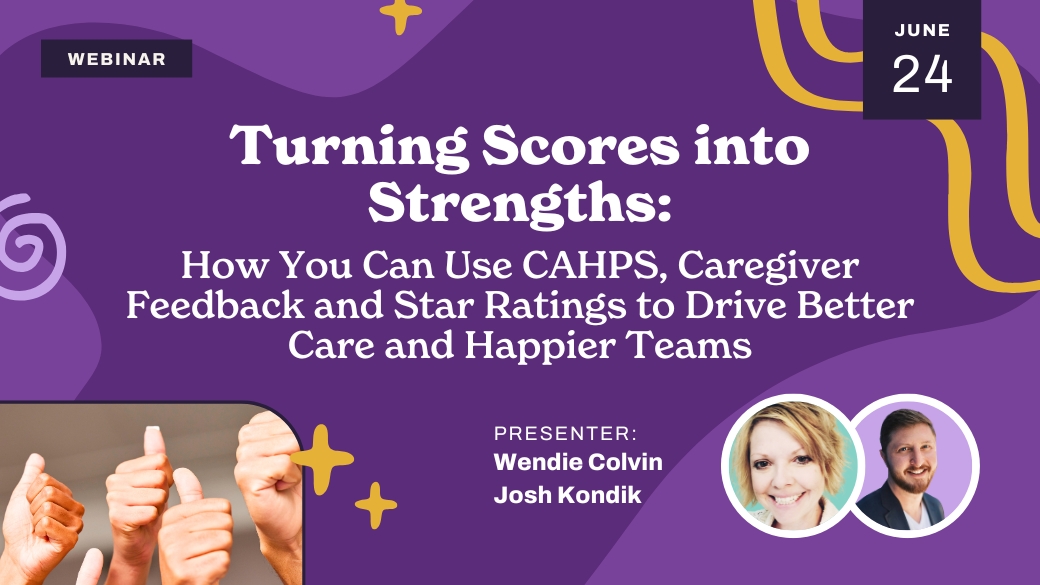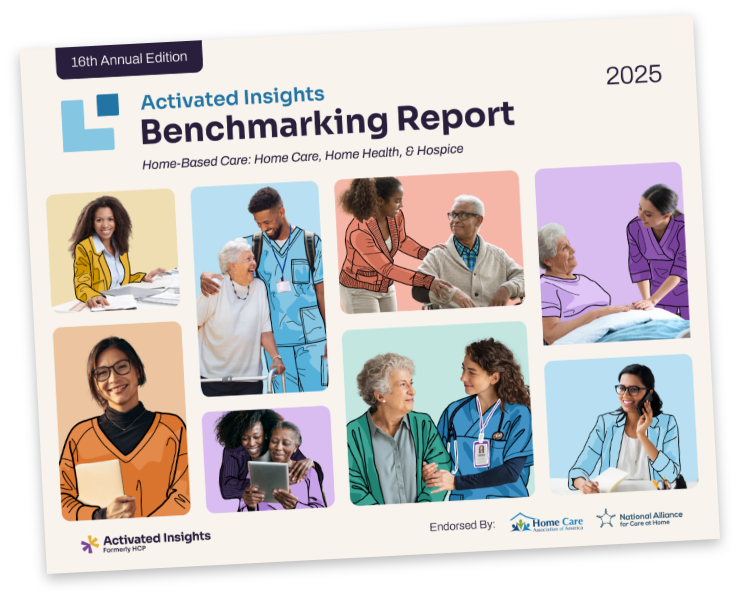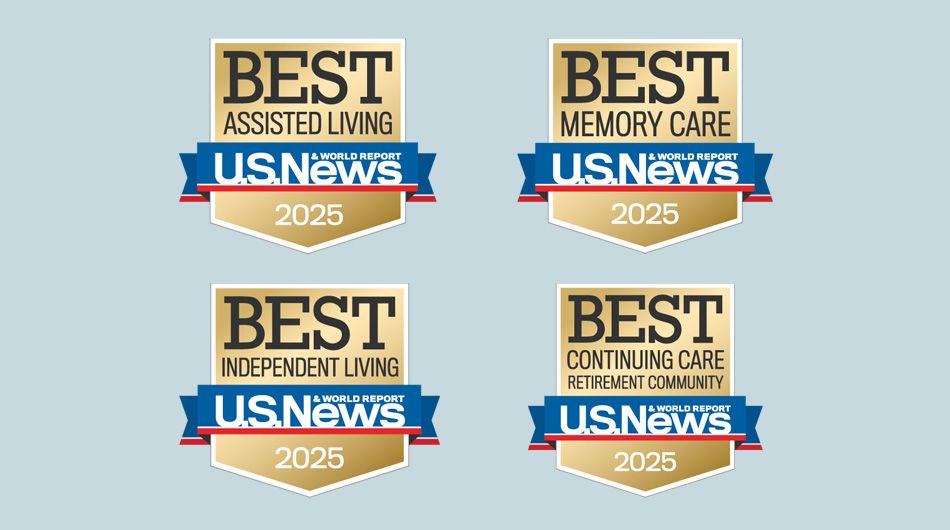Do you have “hot button” issues that mean a great deal to you and serve to motivate your professional life? One of those key issues for me is ensuring inclusive and affirming interactions with older adults in the LGBTQ+ community.
The implications of this issue have personal significance to my family, and, as a nurse, I have witnessed the mistreatment of older adult members of the LGBTQ+ community. This subject is so important that when I sat down to begin writing this article, I felt paralyzed by the need to get it perfect. I wanted to convey just how much I care about this topic while illustrating true-to-life examples of what older adults in this community may experience when seeking care from post-acute and long-term care agencies.
As I thought about my desired outcomes for this article, my goal shifted from perfection to pertinence. According to the National Center on Elder Abuse (NCEA) research brief on the Mistreatment of Lesbian, Gay, Bisexual, and Transgender (LGBT) Elders, “52% believed that they would have been forced to hide their LGBT identity in long-term care settings.” This research brief describes that many LGBT older adults are at high risk for elder abuse, neglect, and various forms of exploitation, with transgender older adults experiencing higher rates of discrimination and victimization than cisgender LGB older adults.
Consider the following scenario that illustrates how abuse, neglect, and exploitation can occur for clients and patients who are members of the LGBTQ+ community. We will then discuss how you can combat this mistreatment in real-life practice to make moves toward cultivating environments where each individual feels accepted, safe, and understood.
Alessandra and Craig
Craig and Alessandra met when they were in their early 50s, and they have been together for 25 years. Alessandra’s health has been steadily declining over the past few years, and she has been needing increased assistance from Craig for activities of daily living. Unfortunately, Alessandra had a bad fall a few weeks ago that required hospitalization and surgery to fix a broken hip.
During the extended hospitalization, Craig could hear the staff discussing Alessandra in the hallways as if she were anything but a patient. It seemed that once the direct care team became aware that Alessandra was transgender, the word spread to everyone on the unit, even if they had no direct role in her care.
Initially, Alessandra required a bedpan for urination. Every time she requested the bedpan, a different staff member assisted her. She felt like a circus sideshow that everyone wanted to see. What hurt the most was that no one wanted to spend time with or get to know her. Craig noticed that she was being talked about instead of being talked to. The couple felt so disgusted by how they were treated during the hospital stay. But they didn’t complain because they had no faith that anything would change.
As discharge plans were being determined, the healthcare team and rehabilitation department recommended that Alessandra receive skilled nursing and physical and occupational therapy at a facility. Understandably, the couple was hesitant to follow these recommendations for fear that they would receive similar treatment in a skilled nursing or long-term care setting.
Check Yourself (and Your Organization) for LGBTQ Client, Patient, and Resident Inclusivity
Now, think about your facility or agency. You are likely providing services to members of the LGBTQ+ community. Do you have a culture of inclusivity and understanding? Are you able to identify instances of abuse and discrimination and address them? How can you support the person in your care without allowing biases or a lack of understanding to interfere?
Implementing our six person-centered care concepts will help you and your staff connect with clients and potential clients. Focusing on the person will allow you to appreciate their humanity, individuality, and uniqueness, fostering a culture of inclusivity. Using concepts that allow for discovery and understanding can help you and your staff identify instances of abuse or discrimination. Keeping the person at the center of the interaction will enhance their experience and decrease room for biases to pop up.
“Focusing on the person will allow you to appreciate their humanity, individuality, and uniqueness, fostering a culture of inclusivity.”
Activated Insights’ six Person-Centered Care Concepts:
- 1
Effective Listening
- 2
Valuable Conversations
- 3
Shared Decision-Making and Goals
- 4
Respect of Choices
- 5
Successful Care Planning
- 6
Emotional Understanding
Applying Person-Centered Care Concepts to Support LGBTQ Clients and Residents
Alessandra and Craig found a skilled nursing facility that provided care, worlds apart from what they experienced at the hospital. Alessandra felt safe and cared for, while Craig was confident that any potential issues would be handled appropriately. Ensuring that the facility was a good fit started with a listening ear.
Effective Listening
Alessandra and Craig spoke with Owen, the admissions coordinator at the skilled nursing facility, and felt comfortable having a vulnerable conversation with him. As Craig described their hospital stay, Owen acknowledged that the hospital experience could negatively affect further interactions with healthcare professionals.
During the initial conversation, Owen maintained eye contact, did not make excuses or blanket statements, and observed non-verbal cues.
Valuable Conversations
Owen’s ability to listen effectively led to a beneficial conversation. Because Alessandra and Craig felt heard, they were able to share their concerns about a temporary stay in a skilled nursing setting. When Craig asked about how reports of mistreatment were handled, Owen shared that the facility had policies regarding discrimination and abuse that were inclusive of LGBTQ individuals. Alessandra mentioned that she was concerned about how she would be referred to in medical records and how her relationship with Craig would be recognized. Owen assured her that intake forms and related documentation used inclusive and affirming language.
Owen was able to build a rapport with the couple that allowed them to share their concerns. As concerns were raised, Owen was sure to address each one specifically to meet the couples’ needs.
“Owen was able to build a rapport with the couple that allowed them to share their concerns.”
Shared Decision-Making and Goals
Alessandra was admitted to the facility and interacted with many members of the care team to initiate her plan of care. She felt both included and supported during this process. The social worker asked who made up her support system, and they were accepting when she described her relationship with Craig and a few close friends who could help her make care decisions.
Ensuring that Alessandra was involved in the decision-making process enabled a more person-centered focus on how care would be delivered. The social worker anticipated Alessandra may have a family structure that did not meet traditional ‘norms.’
Respect of Choices
During the first few days of her stay, Alessandra saw several CNAs and nurses. She was worried that this would be a repeat of what had occurred at the hospital. All the staff she encountered were kind and supportive, but Alessandra was still uneasy about seeing so many different people. She and Constance, the nursing supervisor, discussed limiting the staff she interacted with.
From this conversation, they were able to reach a common ground. Constance was able to respect Alessandra’s choice in limiting staff and to discuss what may occur when the staffing pool was already limited. Constance’s effort went a long way in fostering an environment where Alessandra felt heard and respected.
“Constance was able to respect Alessandra’s choice in limiting staff and to discuss what may occur when the staffing pool was already limited.”
Successful Care Planning
Constance implemented limiting staff members as part of Alessandra’s care plan. This helped Alessandra participate more in her care because she felt safe with the CNAs, nurses, and therapists she saw daily. Craig noticed that extra conversations in the hallways surrounding Alessandra did not occur when the staff was limited.
Flexibility on the staff’s part and Alessandra’s confidence in asking for her needs to be met allowed for successful care planning and positive outcomes to arise.
Emotional Understanding
Unfortunately, Alessandra’s entire stay at the skilled nursing facility was not without issue. While Alessandra’s usual physical therapy assistant was on vacation, another assistant took their place. During their session, this PT assistant was helping Alessandra ambulate in the hallway. Alessandra complained of pain in her hip. The PT assistant responded, “I thought you would be tougher since you used to be a man.” Alessandra was shocked. She asked the PT assistant to leave and requested to speak with the administrator.
The administrator took this issue very seriously and followed through on the actions outlined in the policies regarding discrimination. He really listened to Alessandra to understand how this affected her emotional state, and he checked in on Alessandra and Craig frequently to ensure that they felt supported as the incident was being handled. With continued emotional support from the administrator, the couple moved past the incident, and Alessandra continued to make progress towards being discharged home.
Person-Centered Care for Older Adults in the LGBTQ Community is a Continuous Process
The story of Alessandra and Craig illustrates the challenges many older LGBTQ+ adults face when seeking care. It underscores the urgent need for post-acute and long-term care service providers to foster environments rooted in person-centered care, inclusivity, and respect for all individuals. regardless of their sexual orientation or gender identity. By implementing the six person-centered care concepts outlined here, these organizations can help ensure that older LGBTQ+ adults feel safe, accepted, and understood.
“It underscores the urgent need for post-acute and long-term care service providers to foster environments rooted in person-centered care, inclusivity, and respect for all individuals. regardless of their sexual orientation or gender identity.”
However, person-centered care is neither a one-time achievement nor a push for perfection; it is an ongoing commitment that requires persistence. It calls for continuous self-reflection, education, and a willingness to address biases and discriminatory practices. Healthcare providers must create cultures where all staff feel empowered to advocate for the rights and dignity of LGBTQ+ individuals. This includes having clear policies and procedures in place for reporting and addressing instances of discrimination, as well as providing ongoing training on LGBTQ+-competent care.
An Obligation to All
The healthcare community has a moral and ethical obligation to provide high-quality, affirming care to all individuals, including older LGBTQ+ adults. By doing so, we help ensure that everyone can age with the respect, care, and compassion they deserve.
Related Posts







